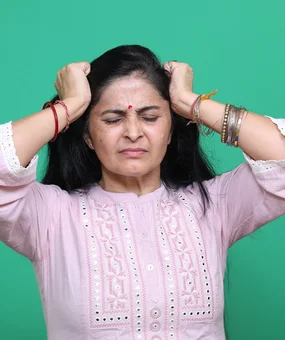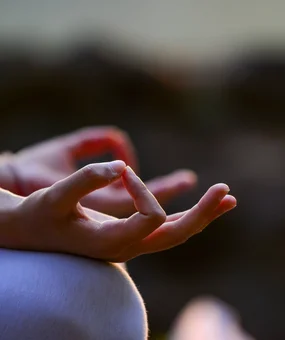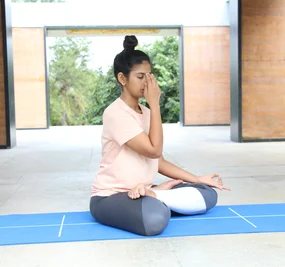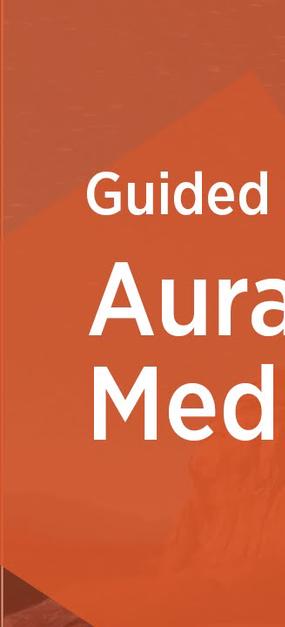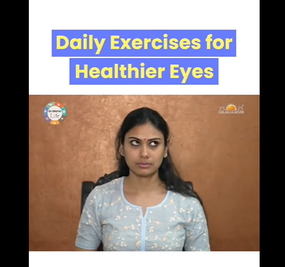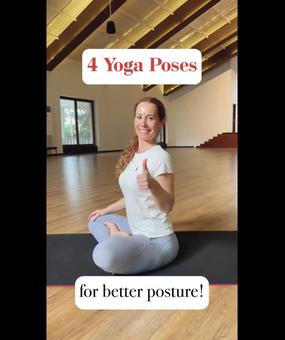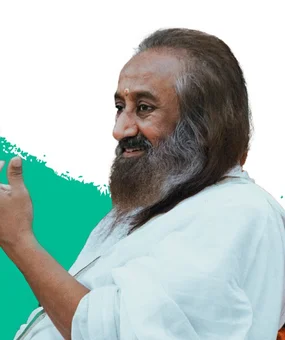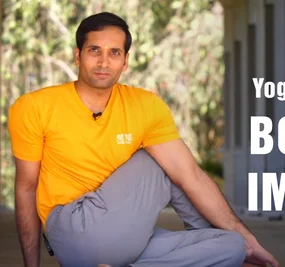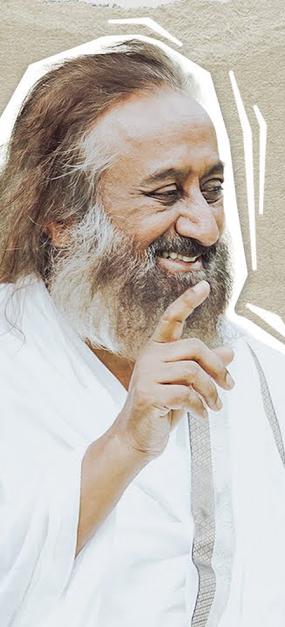Are you also looking for how to improve eyesight naturally? Or want to know whether you can you improve eyesight with exercises? Or are there any eye exercises to remove glasses? Yoga has answer to many of these questions. Regular practice of Yoga asanas for eyes can help you in this. Let us explore some basic yoga exercises to reduce stree on the eyes quickly.
Yoga for Eyes
These yoga exercises for eyes are said to regulate pressure and enhance the functioning of the optic nerves. Even exercises as simple as rapid blinking of the eyes can bring back the twinkle in your eyes, warding off all dreariness caused due to long hours of exposure to electronic devices and make them healthier and stronger.
Regular practice of yoga eye exercises helps to relax eyesight and facilitate normal functioning of our eyes.
Before starting these exercises, it is always recommended to splash your eyes with cold water a few times. Remember to keep the head and spine straight throughout the exercises.
1. Palming
- Sit quietly with your eyes closed and take a few deep breaths to relax.
- Rub the palms of your hands vigorously until they become warm and place them gently over your eyelids.
- Feel the warmth of the palms being transferred onto the eyes and the eye muscles. You will feel instant relaxation.
- Keeping the eyes closed, lower your hands and feel the dryness fade away gradually.
- Once again rub the palms and repeat the process at least three times.
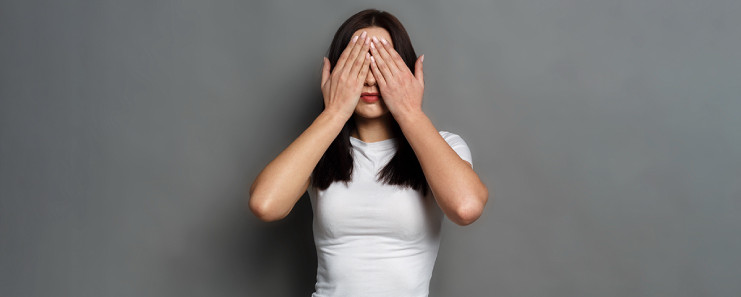
2. Blinking
- Sit comfortably with your eyes open.
- Blink around 10 times very quickly.
- Close your eyes and relax for 20 seconds while taking your attention to your breath.
- Repeat this exercise about five times.
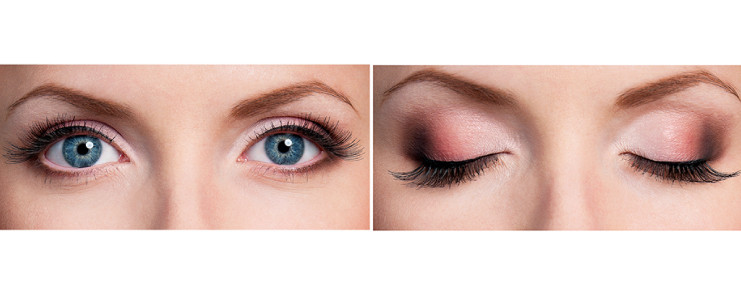
Our day starts aligned with nature. When we open our eyes to the first rays of the sun, our yogic activity begins. Every blink of our eye is a natural exercise that we provide to our eye muscles. We just need to maintain that rhythm with utmost awareness to not give our eyes away to myopia or hypermetropia.
3. Side-ways viewing
- Sit with legs straight in front of the body.
- Now lift the arms, with fists closed and your thumbs pointing upward.
- Look at a point straight in front of you in level with your eyes.
- Keep the head in this fixed position, focus on the following one after the other, by shifting your vision to the:
- Space between the eyebrows
- Left thumb
- Space between the eyebrows
- Right thumb
- Space between the eyebrows
- Left thumb
- Repeat this exercise 10 to 20 times
- After completing this exercise, close your eyes and rest.
Observe the following breathing pattern as you perform the above exercise:
- Inhale in a neutral position.
- Exhale while looking to the side.
- Inhale and come back to the center.
4. Front and sideways viewing
- Sit with legs straight in front of the body.
- Now, close the left fist and place it on the left knee ensuring that the thumb points upwards.
- Look at a point straight in front of you and in level with your eyes.
- Keep the head fixed in this position.
- Breathing out, focus your eyes on the left thumb.
- Breathing in, focus your eyes at a point in front of you and in level with your eyes.
- Repeat the same process with the right thumb.
- Close your eyes and rest.
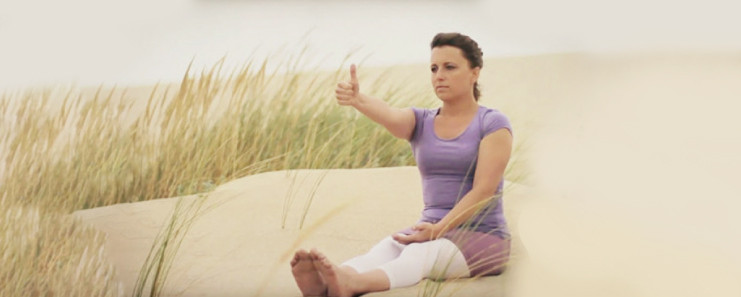
5. Rotational viewing
- Sit with legs straight in front of your body.
- Place the left hand on the left knee.
- Hold the right fist above the right knee, with the thumb pointing upwards. Keep the elbow straight.
- Now keeping the head still, focus your eyes on the thumb.
- Make a circle with the thumb, keeping the elbow straight.
- Repeat this exercise five times each in a clockwise and anti-clockwise direction.
- Repeat the process with the left thumb.
- Close your eyes and rest.
Observe the following breathing pattern during this exercise:
- Inhale while completing the upper arc of the circle.
- Exhale while completing the lower arc.
6. Up and down viewing
- Sit with legs straight in front of your body.
- With both the thumbs pointing upwards, place both the fists on the knees.
- Slowly raise the right thumb keeping the arms straight. Follow the motion of the thumb upwards with the eyes.
- When the thumb is raised to the maximum, gradually bring it down to the starting position. Continue to keep the eyes focused on the thumb while keeping the head still throughout.
- Repeat the same process with the left thumb.
- Practice these five times with each thumb.
- The head and the spine should be kept straight throughout.
- Close the eyes and relax.
Observe the following breathing pattern as you perform the above exercise:
- Inhale while raising the eyes.
- Exhale while lowering the eyes.
7. Preliminary nose tip gazing
- Sit in a cross-legged pose.
- Lift the right arm straight directly in front of the nose.
- Making a fist with the right hand, keep your thumb pointing upward.
- Focus both eyes on the tip of the thumb.
- Now bend the arm and gradually bring the thumb to the tip of the nose, all the while having the eyes focused on the tip of the thumb.
- Remain in this position for a while with the thumb held at the tip of the nose with the eyes focused there.
- Continuing to gaze at the tip of the thumb, gradually straighten the arm.
- This constitutes a single round.
- Perform at least five such rounds.
Observe the following breathing pattern as you perform the above exercise:
- Breathe in while the thumb is pulled to the tip of the nose.
- Retain inside while holding the thumb at the tip of the nose.
- Breathe out as the arm is straightened.
8. Near and distant viewing
- Stand or sit by an open window with a clear view of the horizon. Keep the arms by your side.
- Focus on the tip of the nose for 5-10 seconds.
- Repeat this about 10-20 times.
- Close and relax the eyes.
Observe the following breathing pattern:
- Inhale during close viewing.
- Exhale during distant viewing.
After completing all the above exercises, relax in Shavasana for a few minutes. Breathe gently and normally, and do not resist any thoughts or sensations.
Practicing yoga helps align the body and mind, but may not be a substitute for medicine. It is essential to learn and practice yoga under the supervision of a trained Yoga teacher. In case of any medical condition, practice yoga only after consulting your doctor and a Sri Sri yoga teacher.






